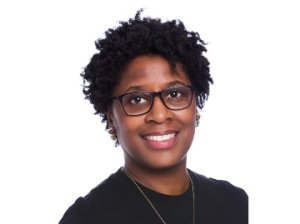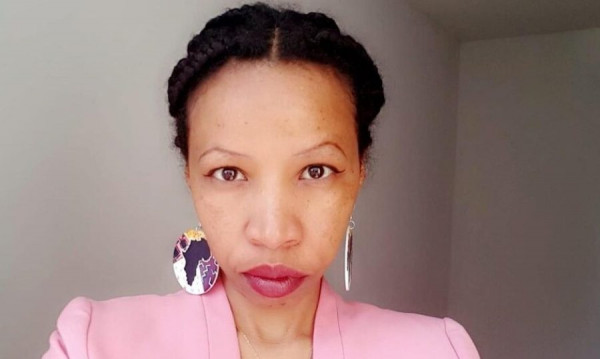The ones where Kristina McPherson, host of YouTube platform As Told By Immigrants, and now a Canadian citizen with a decade behind her, wakes up convinced her status has expired.
The panic is so visceral that she has to check her documents to remind herself that she made it. She’s safe. But someone else isn’t—and their fear has become hers.
“I always dream that my status is going to expire because their status is expiring,” McPherson explains. “It’s the trauma—you’re almost triggered. You end up over-identifying.”
This is what McPherson calls Post-Immigration Stress Disorder—a term she coined in 2023 to name something millions experience but few discuss. It’s the anxiety of living on two timelines: surviving today while bureaucratic machinery decides your tomorrow. It’s binge-watching an entire Netflix series to numb dread. It’s telling your brother not to ask about Christmas plans in March because you genuinely don’t know which country you’ll be in. It’s succeeding on paper while privately unravelling.
When rejection sets the tone
McPherson arrived in Toronto from Jamaica in January 2014, one week after the city’s infamous ice storm. She was 21 and already familiar with rejection: her first student visa application had been denied over a technicality.
“That rejection kind of set the tone for me,” she says. “The life you get if you’re approved versus rejected can look very different.”
On the plane to Toronto, she felt “emotionally numb.” Her focus on finally getting in meant she hadn’t thought through what came next. What followed: more rejections under the newly launched Express Entry system, endless paperwork, years of living out of a suitcase with two pots—refusing to buy anything she couldn’t carry in case she had to leave.
“I lived bare minimum,” she says. “Because in just a flip of an application, life could look different. If I’m leaving, I’m leaving with every single dollar.”
{https://www.instagram.com/reel/DKK6cdSyydN/?igsh=MTZ5ODBpam9jbnk4dg==}
Naming the invisible wound
It wasn’t until year ten—citizenship secured, dust settled—that McPherson could name what had happened. Studying post-traumatic stress disorder after personal loss, she recognized the parallels: hyper-vigilance, emotional numbing, and an inability to imagine the future.
“You know you’re anxious, a little depressed, isolated, thinking everyone else is living their life and you’re the only one with these problems.”
Her symptoms were textbook trauma. “I binge-watched Big Brother and The Crown in a single weekend,” she laughs. “I was detaching.” Jigsaw puzzles became a form of therapy before she knew to call it that. Even waking up for work felt harder each year as fatigue set in.
Research bears her out: recent immigrants are far less likely than Canadian-born populations to report good mental health and far less likely to seek professional help. During the COVID-19 pandemic, over half of newcomers said their mental health worsened; nearly one-third showed signs of generalized anxiety disorder.
The policy whiplash
McPherson’s story echoes what thousands face now. In late 2024, Ottawa announced a dramatic reset, cutting permanent-resident targets from 500,000 to 395,000 and, for the first time, capping temporary resident numbers. The shift followed a steep rise in anti-immigrant sentiment: 58 percent of Canadians now say there’s “too much immigration,” the highest level in 25 years.
“Immigration is constantly changing,” McPherson says. “When I came, there was no Express Entry. There’s always some new rule that changes people’s lives overnight.”
The stories that haunt her most are those trapped between old and new policies. “People come in under one rule, expecting it to carry them through—and then the policy changes and they’re out of time,” she says. “Those are the ones that stick with me. I dream their dreams.”
Building what she needed
Out of those dreams came action. As Told by Canadian Immigrants, the YouTube platform and online community McPherson launched fills the human gap she once faced alone.
{https://www.youtube.com/watch?v=Ws6v4eQ22eo}
The name borrows from the Nickelodeon cartoon As Told by Ginger and its lyric: “Someone once told me the grass is much greener on the other side.”
“I thought it was so fitting,” McPherson says. “The grass is greener where you water it. Maybe it is just different grass, not necessarily greener, and you just have to water whatever grass that you’re in.”
The platform shares immigrant stories that expose the human side of policy: the sleepless nights, the cultural dissonance, the quiet resilience. One recurring theme that McPherson has found is networking—a survival skill that most newcomers underestimate.
“Networking culturally isn’t really a thing for us,” she says. “We don’t think, ‘Let’s go to events or do informational interviews.’ So then you come here, not realizing that it’s a big part of the culture and surviving here.”
Creating spaces to heal
McPherson didn’t stop at storytelling. She began hosting Paint Nights and Sports Days, transforming community events into therapeutic experiences disguised as fun.
“For a long time, people saw me on YouTube, but I didn’t see them,” she says. “Then people would meet me in person, and I realized—they didn’t know each other either. It’s a different energy when we’re in the same room.”
These gatherings serve as both community-building and mental-health interventions. “When you’re online, you’re still checking your immigration status or CRS scores,” she says. “But in person, you’re detached. For twelve hours, you’re just a person with other people.”
Through paint, sport, and shared laughter, McPherson is quietly pioneering trauma-informed community work—creating a human remedy for the bureaucratic coldness of migration.
And her work is unfolding against an increasingly hostile backdrop.
The human cost of policy
In 2025, the anti-immigrant sentiment shifted dramatically. 57 percent of Canadians agreed that too many immigrants “aren’t adopting Canadian values,” while nearly half questioned the legitimacy of refugee claimants.
“There’s always going to be anti-immigrant sentiment,” McPherson says. “But through my platform, I hope to humanize the experience, so people see the humans behind the policies.”
She points out that even Canada’s support system draws hard lines between those who deserve help and those who don’t. The term "newcomer" applies legally only to permanent residents and refugees, leaving temporary residents—such as international students and migrant workers—largely unsupported.
“There needs to be more for them,” she insists. “They’re working, contributing, paying taxes. They deserve to feel like they belong.”
Reimagining the journey
If she could redesign the system, McPherson says she’d make it “less transactional and more human from the start.”
“Canada needs people,” she says. “And there’s a way to do it sustainably and compassionately.”
In the meantime, she’s building the bridge herself: expanding her storytelling platform, growing her in-person programs, writing books that blend mental health and art therapy. Her first, From Foreign Student to Canadian Citizen: Everything In Between, chronicles the bureaucratic maze she navigated. Her later works explore shadow work, resilience, and healing, tools for others walking the same path.
Dreams, rewritten
For McPherson, the ultimate goal isn’t just surviving immigration—it’s belonging. Her events and words remind newcomers that identity is not something you lose in transit, but something you continually nurture.
“The grass is greener where you water it,” she repeats, as if the mantra itself can quiet the panic of those recurring dreams.
Because immigration doesn’t end with a visa approval, the real journey begins after the paperwork, when the noise subsides and the silence sets in. When you wake up in a new country, heart pounding, unsure whether the life you built is real.
Those are the dreams no one warns you about.
And it’s in that uneasy space between fear and faith, between dream and reality, that Kristina McPherson is helping others finally wake up whole.

 By
By 







